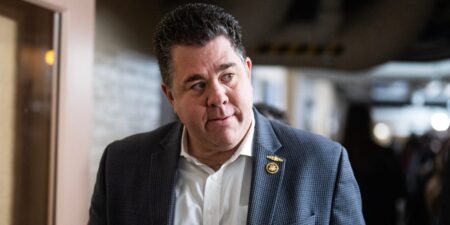Daylong closing arguments began Wednesday morning in the Charlie Javice fraud trial in New York — and one word is playing a starring role.
That pivotal word is “user.”
Federal prosecutors say that almost four years ago, Javice lied about its number of users in order to defraud the nation’s largest bank, JPMorgan Chase, out of $175 million, the price the bank paid for her financial aid website, Frank.
“Charlie Javice and Olivier Omar sold Frank for $175 million worth of lies,” prosecutor Nicholas Chiuchiolo told jurors, beginning his closing argument against the website founder and her lieutenant-turned-codefendant.
The pair consistently assured JPMorgan “that Frank had over 4 million users, and that a user was someone who’d started an account by providing their first name, last name, phone number, and email,” Chiuchiolo said.
Instead, “they generated fake data for 4 million people who did not exist,” he said. “The names, phone numbers, emails? All were fake.”
Prosecutors say Javice tricked bank executives into thinking that if they purchased Frank, they would become the new owners of the names, emails, and addresses of all 4 million of these Frank users. These users were students at the start of their financial journeys, to whom JPMorgan could market checking accounts and credit cards.
In five weeks of testimony, lawyers for Javice have sought to show that this is not what she had meant by users at all.
Instead, her lawyers say, she told the bank that 4 million people had merely visited the website and clicked around a bit, a number supported by Google Analytics.
Frank only ever collected personal identifying data for 300,000 account holders, not 4 million, both sides agree — a fact the bank says they only discovered months after the merger.
So a central dispute in front of jurors — as they listen to closing arguments by attorneys for the government, for Javice, and for her co-defendant — will be this: How did Javice, 32, and Amar, 50, define “user” in negotiations with JPMorgan? As a nameless clicker? Or as a potential Chase customer whom the bank could email and text?
US District Judge Alvin Hellerstein raised this question in court on Tuesday as part of his preparation for instructing the jury on the law before deliberations.
“What about the argument that by telling Chase that ‘We have 4.25 million users,’ that they were telling the truth?” he asked Georgia Kostopoulos, an assistant US attorney.
“It was a lie,” the prosecutor quickly answered.
“But we have a number exactly the same as the number of users that visited the website,” the judge pushed, referring to the Google Analytics total. “And they’re called users.”
Kostopoulos countered that both Javice and Amar were present at a July 21, 2021, meeting where Javice assured JPMorgan Chase that a user was someone who had provided Frank with their name and other personal identifying information as part of signing up for a website account.
The bank was also told at that meeting that at least half of these 4 million users had used their Frank account to complete a Free Application for Federal Student Aid, or FAFSA, the federal prosecutor added.
According to trial testimony, filling out a FAFSA would mean these users gave Frank their Social Security numbers and other valuable personal information, such as their income and savings data.
The judge has limited closing arguments to two hours per side.
The government is scheduled to present its arguments first, followed by Javice’s. After lunch, jurors will hear arguments on behalf of Amar, followed by a brief rebuttal statement by the government.
The two co-defendants are charged with conspiracy to commit wire and bank fraud, along with separate counts of wire, bank, and securities fraud. They face potential maximum sentences of 30 years in prison.
March 26, 2025: This story was updated Wednesday to include details from ongoing closing arguments.
Read the full article here
















